IP Ratings and Flood Light Housing
What is IP rating?
IP rating or Ingress Protection Marking is a common standard published by International Electrotechnical Commission and defines degrees of protection to electronic devices and parts against intrusion of foreign objects (human hands and fingers, tools and wires, dirt and dust) and liquids (like water) entering the object. These Ingress Protection ratings are defined in an international standard EN 60529.
Basically, IP rating shows how durable and secure an electric device will be against contact with human hands or smaller objects like dirt or dust and how well protected its electrical parts are from contact with water. IP rating standard helps to clarify different terms used in marketing like waterproof to describe electric products. When we see an electric device being described as waterproof, the first thing that comes in our minds – how waterproof it really is? Can it be used only in light rain or can it be left outdoors for all year, not worrying about dust and rain messing up the electronics of our device? Or can it even be used underwater? To answer these common questions that customers might have, Ingress Protection rating standards were developed.
Explanation of IP ratings
Ingress Protection rating usually consists of abbreviation IP followed by two digits. The first digit is used to rate Protection from ingress of solid foreign objects or solid protection and the second digit rates Protection from ingress of liquid or liquid protection. Solid protection is more known as dust resistance and liquid protection – water resistance.
Solid protection levels go from 0 to 6 and liquid protection levels go from 0 to 9. This is an example of IP rating describing a flood light – IP44. If the object rated has only one level of protection, for example water resistance, an „X” symbol can be used instead of a number. Here is an IP rating example of an object with no solid protection but with little water protection – IPX1.
IP rating chart
Here is an IP rating chart describing each level of solid and liquid protection.
IP ratings and flood lighting
You may have seen many flood lights described as „waterproof” or „weatherproof outdoor”, but how many of them are really waterproof and can be used in any weather conditions all year around?
IP rating is one of the many numbers used to specify flood lighting. As flood lights are mainly used outdoors, IP rating is very important factor to indicate on each flood light. Most manufacturers are doing great job testing and providing correct IP ratings for their products, so customers can find the best suited flood light for their needs.
IP rating more or less shows how protective housing of the flood light is. Flood light casing has important role in overall durability and quality (also price) of a flood light fixture. As flood lights have electric parts like wires, ballasts, bulbs or diodes, solar panels and other parts, they need to be properly protected from different outdoor impacts like dust and rain. Good casing of flood light will be 100% dust tight and will protect flood light fixture from all possible water damages that outdoor flood light might experience. (This mostly excludes high level protection against immersion in water, if flood light is not intended to be used under water). So what are the right levels from IP rating you need to look at, when purchasing an outdoor flood light? To correctly answer this question, we need to consider two things – weather conditions in area you will be using the flood light and type of flood light you have intended to purchase.
Dust resistance ratings for flood lights
Dust resistance rating or „first digit of IP” rates protection against ingress of solid foreign objects. Practically every outdoor light comes with solid protection number from 4 – 6. For some, rating 4 might seem too low for an outdoor light, because by the Ingress Protection Marking standard, these lights are protected only against objects greater than 1.0 mm and not dust. Actually flood lights with solid protection level of 4 usually have other parts attached to the fixture like motion detector and solar panel. Lamp itself may have IP65, but it’s more difficult to protect motion sensor and solar panel, so the IP decreases to IP45. Regular flood lights most of the time have maximum dust resistance level 6, which means that they are dust tight.
If you live in a very dusty area and flood light can be subject to high winds and storms, look for a flood light with dust protection rating of at least 5. Solar motion lights with dust protection rating of 6 may cost more than ones with lower rating, however they are going to have more durable and better insulated housing. As mentioned above, if you need a regular wired flood light you will not have to worry much about dust resistance ratings, because practically all outdoor led flood lights have 6th level solid protection rating and are dust tight. The thing you need to pay more attention to is the second number of IP ratings or water resistance level.
Water resistance ratings for flood lights
“The second digit of IP” indicates protection from ingress of liquid, which in flood lighting case means protection from water or water resistance. Flood lights have water resistance ratings from 4 up to 8. The most common water resistance ratings for flood lights are 4, 5 and 6. Water resistance rating 4 means that flood light is protected against water splashes from all directions, rating 5 means that flood light is protected against jets of water and rating 6 means that fixture is protected again strong jets of water. When looking at different types of flood lights, the situation with water protection is the same as with solid protection. Less parts flood light have, easier and cheaper it is to protect the lighting fixture. Motion activated solar flood lights come with water resistance ratings of 4 – 5, while practically any regular wired and portable flood lights have water resistance ratings of at least 5. Powerful LED portable flood lights that are used in more specific and even extreme working conditions have extra sealed housing and water resistance rating of 8. These flood lights are protected against continuous immersion under water.
For most weather conditions flood lights with water resistance rating of 4 and 5 are going to be good enough. Basically, flood light with water resistance rating of 4 or 5 is suited for outdoor conditions, which includes light to moderate rain and even showers. If you live in area with continuous strong and long rain showers or flood light needs to be installed in such a place, where it may get under water pressure for longer periods of time, you need to look for a flood light with water resistance levels of 7 or 8. These flood lights will cost significantly more, but the light and its electric components will be protected from water damage. For illuminating some common places around the house like front doors, backyard, garden, driveway or similar places, a flood light with water resistance rating of 4 or 5 will be perfectly suitable.
If you need a specific flood light with a high water resistance rating, read the manual of flood light or contact manufacturer directly to specify the precise total water resistance level of that flood light, because products with water resistance rating of 8 can be tested in different conditions by each manufacturer.
Most popular IP ratings for flood lights and their meanings
Here I have gathered the most common IP ratings for flood lights and explained their levels of protection against solid and water damage.
- IP44 (usually motion activated solar flood lights) – Some flood light fixtures with motion sensor and solar panel can have IP44 rating. This means that lighting fixture is protected against solid objects greater than 1.0mm and is protected against water splashing from any direction.
- IP54 (usually motion activated solar flood lights) – Differs from IP44 flood lights with better sealed housing that is protected against dust ingress.
- IP55 (usually solar flood and spot lights) – IP55 rated lighting fixtures are protected against dust ingress and water jets projected by a nozzle.
- IP64 (usually all in one fixture solar flood lights) –IP64 flood lights are rated dust tight, so they are fully protected against dust ingress. Also these lights are protected against water splashing from any direction.
Previously mentioned IP44 – IP64 rated lighting fixture usually are motion activated solar powered flood or spot lights. This means that theses lamps have additional solar panel and motion sensor that also needs solid and water protection. If you live in an area with mostly calm weather with occasional rain and higher winds, flood lights with IP ratings from IP44-IP64 will be good enough for your needs.
- IP65 (most LED and solar flood lights) – This is by miles the most popular IP rating for flood lights. Over half of all flood lights at 100 dollar range and below are IP65 rated. In this category you will mostly find regular LED flood lights and portable flood and work lights. Also a lot of solar flood lights now are rated IP65. This rating means that lighting fixture is fully dust tight and is protected against water jets projected by a nozzle. Flood lights rated IP65 can be used outdoors practically in any place all year around (excluding some special cases, where light fixture is subject to powerful water jets or needs to be fully used under water for some time).
- IP66 (LED flood lights) – IP66 rating can mostly be found on regular LED flood lights. Only few solar flood lights are rated IP66. IP66 rated products differ from IP65 rated with better sealed housing that protects electronics of the lighting fixture against strong jets of water.
- IP67 and IP68 (high quality LED flood lights) – Powerful, high quality flood and work lights are rated IP67 and IP68. These lights are made for special, difficult working conditions. Lights with IP67 rating are dust tight and are protected against effects of immersion into the water up to 1 meter for 30 minutes. Lights with IP68 rating are dust tight and are protected against long periods of immersion in water under pressure.

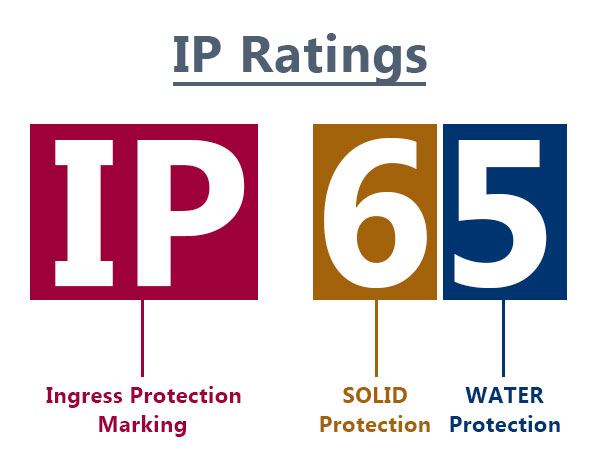
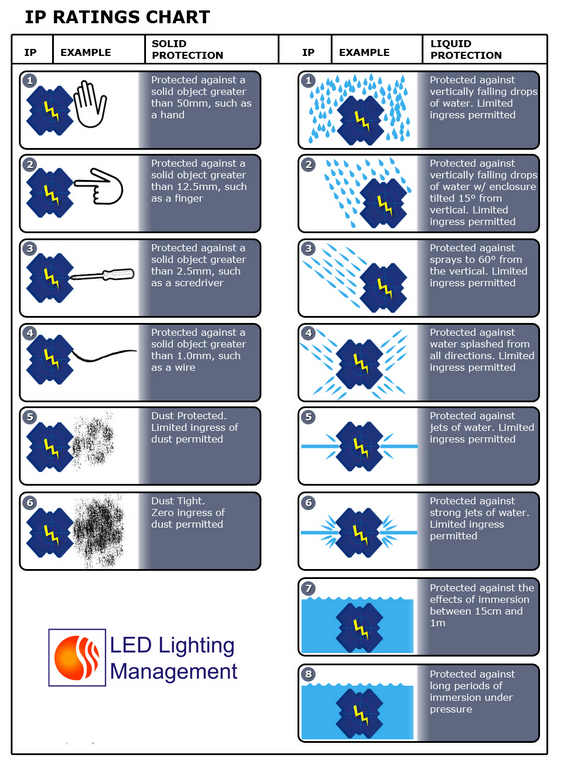
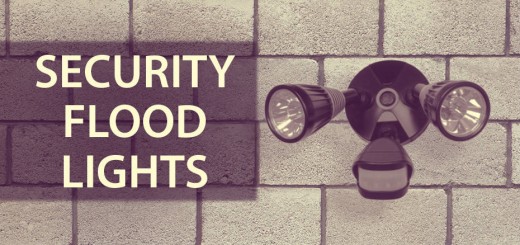
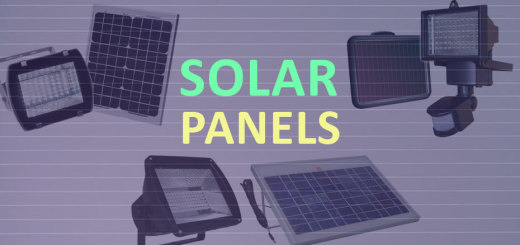
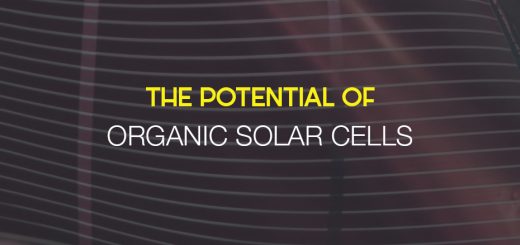
Hello,
I wanted to thank you for your work. Your description of the IP ratings is very easy to read and understand. I’ve been buying solar powered lights for my home for the past year, and didn’t know what IP stood for, but I assumed that the higher the number, the better the light. My assumption was correct, but I was still ignorant about WHAT the IP rating was. Your blog answered my questions, FULLY! 🙂
Thank you again for your in-depth article, and I look forward to learning more. I’ve signed up to be notified of new posts.
Gus.